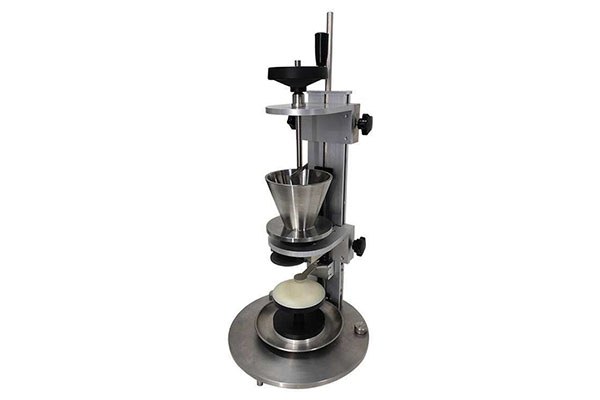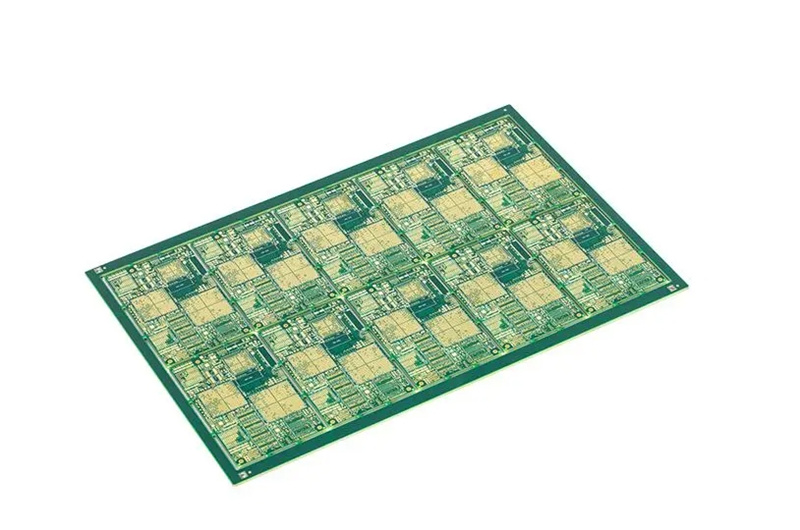The Powder Flow Tester offers a rapid and trouble-free analysis of powder flow behavior in industrial processing equipment. The characteristics of powders are determined using various indicators, angle of repose, collapse angle, difference angle, plate angle, sliding angle, tap density, bulk density, dispersion, compression, etc. The indicators have been tested on conventional devices for a long time, but they do not offer accuracy, easy operation, and unbiased test results.
The powder quality is greatly influenced by particle shape, fineness, cohesiveness, and size distribution. Hence, it’s essential to figure out a way to control industry powder quality. The powder property tester can test powder fluidity, angle of repose (angle of repose), and bulk density, making it the perfect instrument for evaluating powder properties.
A powder physical property tester is an instrument that precisely measures and examines powder qualities. Recent modern technologies, namely automatic control technology, CCD camera, and touch screen technology, have helped make powder testing accurate. The exact test procedure involves using a camera to obtain an image of the powder buildup and then precisely analyzing it to determine the angles of repose, collapse, difference, and plate. Precise control technology helps test tap density and bulk density accurately.
Main test indicators:
Direct measurement: tap density, loose density, angle of repose, collapse angle, plate angle, dispersion, Hall flow rate, etc.
Calculating the previously mentioned test data means the values for angle, compressibility, void ratio, uniformity, and cohesion can be obtained. Furthermore, Carr’s index parameter can also be used to calculate these.
What is the fluidity of powder commonly used to indicate?
A powder’s fluidity is closely related to the particle’s shape, size, surface state, density, and porosity. Additionally, the fluidity of the complex relationship between internal friction and adhesion of the particles cannot be determined using a single value. The fluidity of powder is usually expressed by the angle of repose and flow velocity.
The angle of repose indicates the angle between the free surface and the horizontal plane of a pile of powder in a cone shape. It is the angle between the hypotenuse of the pile and the horizontal line and is denoted by α.
Angle of repose: It makes determining powder fluidity easy and rapid. Better fluidity means a small angle of repose and vice versa. Suppose the angle of repose is ≤ 30o, the fluidity is good, whereas the angle of repose ≤ 40o indicates that it meets the need for fluidity in the production process, and the angle of repose is≥ 40o means that the fluidity is poor. The commonly used measurement methods of the angle of repose include injection, discharge, container tilt, etc.
Flow rate: It refers to the powder flow rate through a hole or tube of a particular diameter per unit of time. The precise measurement procedure entails opening the cylindrical container’s bottom center, adding powder, and measuring the amount of powder flowing out per unit time or flow rate. If the flow rate is rapid and the fluidity is food, flow uniformity is ultimately good.
What are the factors that affect the fluidity of powders?
The fluidity of any drug or excipient is mainly related to its characteristics. However, powder particle properties such as particle size, distribution, shape, and surface roughness can also influence fluidity.
Particle size and distribution: The common consensus is that the powder has good fluidity and a small angle of repose when the particle size is more than 200 m.; Small particle size results in increased surface area of the powder, increased friction between particles, increased angle of repose, and ultimately decreased fluidity. However, when the particle size is less than 100 μm, it is believed that the adhesive forces are greater than gravity. Hence, the adhesive force is greater than the gravity, and the angle of repose increases greatly.
The particle size distribution also influences fluidity. Large particles exhibit better fluidity and vice versa. Smaller particles in the powder will result in declined fluidity as they have a greater angle of repose. On the other hand, a fine powder with low fluidity can be made less sticky and more fluid by adding coarser particles.
Powders with spherical or nearly spherical particle shapes and smooth surfaces are known as powders. Less friction between the particles confers good fluidity. Large friction between powder particles results in poor fluidity. The rough surface of the particles also increases the difficulty of flow. In general, the worse the fluidity, the rougher the surface, the greater the angle of repose, and the more irregular the particle shape.
Fluidity is considered good when the powder’s moisture content is dry. A layer of water film is adsorbed on the particle’s surface after a specific amour of water is absorbed by a powder placed in an environment with high relative humidity. The gravitation force between particles multiplies due to the surface tension of water and negatively affects the fluidity. When the amount of moisture absorbed by the powder increases, the angle of repose also increases. Hence the fluidity declines. Likewise, when the absorption exceeds the limit, the adhesive forces on the surface are removed by the adsorbed moisture creating lubrication properties. Hence, the angle of repose decreases, and fluidity is enhanced. The effect of moisture content on fluidity varies with different powder types.
Influence of adding other components: The addition of different components to a powder sample can affect fluidity. The addition of talc and micro powder silica gel enhances fluidity by working as a glidant.
Powder Flow Analyzer Applications:
Researchers in the powder industry use powder flow analyzers to enable a broad and growing range of manufacturing.
Food Ingredients: Powder Flow Analyses are employed in various food industries due to the accuracy and objective detection of ingredients, mixtures, and finished products offered by it. The products include coffee granules, lecithin, spices, beans, herb seasonings etc.
Pharmaceutical Powders: Grading of dry powder samples in conjunction with objective and repeatable testing can offer significant advantages and prospects. They consist of generating the best blend formulas, maintaining product quality control, and batch and source selection optimization in terms of cost and quality. Innovative technologies give such data by analyzing sample behavior under test conditions that imitate process or product handling conditions or by monitoring and comparing products that can flow. High-standard manufacturers are obliged to source raw materials efficiently, reduce waste, and produce quality products before and after storage, packaging, and shipment. The application of practical powder rheology is an invaluable tool for achieving these goals.
Grain Products: The most common handling issue is movement from storage silos or silos into production. Powder and granules are allowed to sit for a while in storage before they can be used. As a result, they become compacted and require a lot of energy to flow compared to an aerated sample. However, powders employed right after transportation have better flowability than stored powders. Grain product powders include corn flour, couscous, oat bran, polenta, rice, tapioca, and wheat bran.
Cleaning and washing products: Expensive ingredients can be replaced with low-cost powders to reduce the overall expense. However, one drawback that makes one question this idea is that substitutes can be produced to mimic the original material but may not be easy to store or transport. Discovering this problem after production will result in downtime and additional costs. The quality of the final product may also be affected.
Nuts, seeds, and legumes: The most common manufacturing problem is powder or granule flow, such as separation, inaccurate package filling, and blockages and stoppages. Common powder/granular flow problems can have an adverse effect on production, handling, packaging, distribution, and end usage.
Personal care powders: Pharmaceutical and cosmetic industries commonly use PFA as it enables them to objectively test ingredients, blends, and finished products. Product development teams are equipped to determine the flow properties of new excipients, active ingredients, and formulations. It helps predict the behavior of powders before starting mass production. Furthermore, it helps understand the interaction of new powders with existing ingredients. This speeds up development time and minimizes “trial and error” strategies, especially when certain ingredients are precious and may only be produced in small quantities.
Construction and Finishing Materials: Powder flow is blamed for typical manufacturing issues, such as uneven mixing (separation), under- or overdose, improper filling, clogging, and clogging. As a result, material rejections, machine downtime, and flaws are observed in the final product. Common powder flow problems can negatively impact storage, handling, production, packaging, distribution, and end use. These materials include cement, upholstery, plaster, sawdust, sugar soap, tile grout, wallpaper adhesive, and paint.
Horticultural products and animal feed: The core of product processing involves handling and processing powders, microparticles, and granules, but this has historically been difficult due to their unpredictable and erratic behavior, particularly when it comes to fluidity. Various powdered raw materials and semi-finished goods such as bird litter, grass seed, insect food, bird food, and plant fertilizers are available. The powder flow assessment improvements will significantly improve the manufacturing process and the bottom line for the sector.





Leave a Reply
You must be logged in to post a comment.